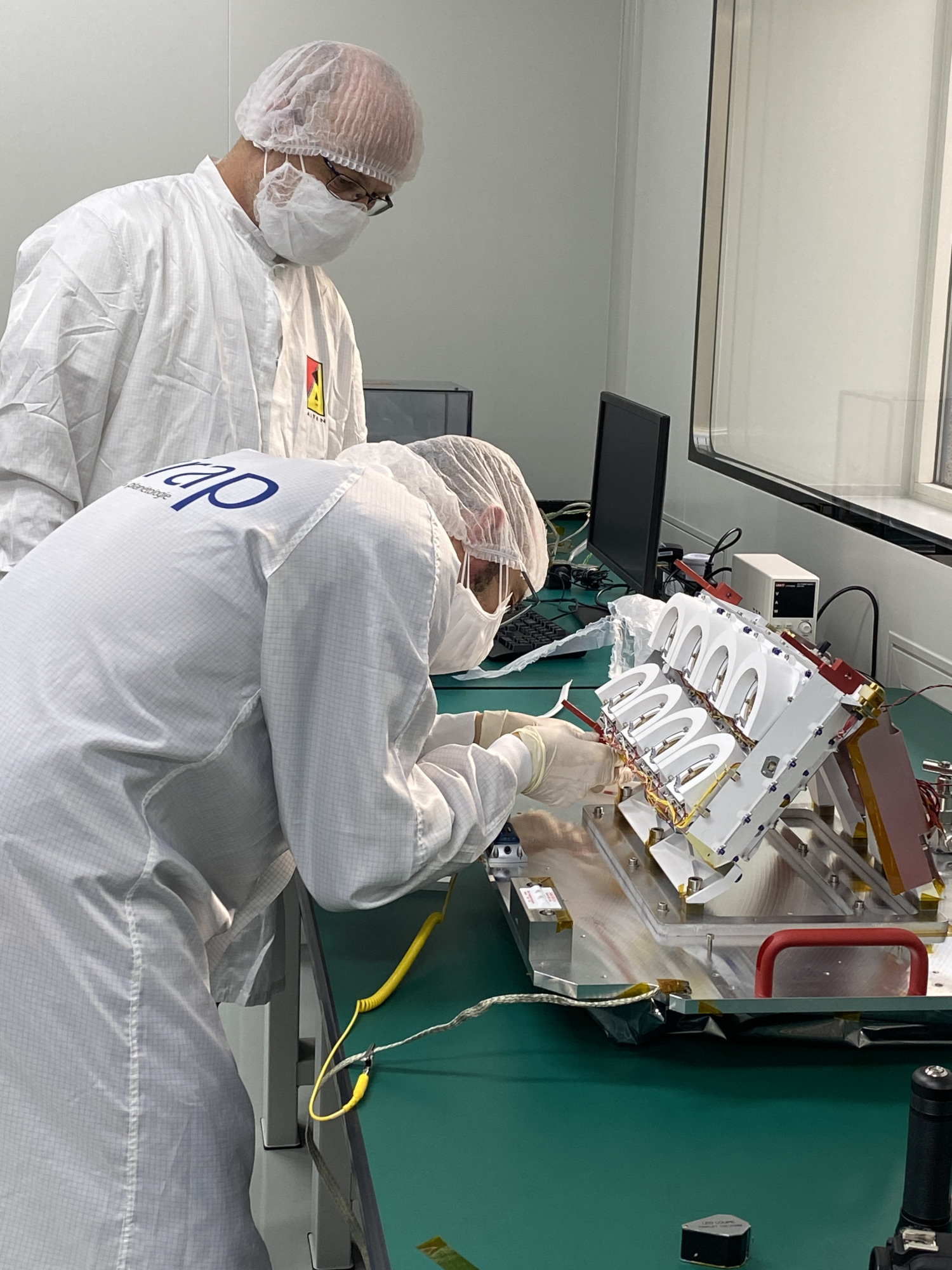DORN instrument heads for the Moon
The DORN (Detection of Outgassing RadoN) instrument, dedicated to measuring radon on the Moon’s surface, was developed at IRAP-OMP. It will be on board China’s Chang’E6 lunar mission, scheduled for launch in spring 2024.
Since its delivery to China in September 2023, DORN has undergone conclusive assembly, integration and test (AIT) trials with the Chang’E6 Lander at the CAST (Chinese Academy of Science and Technology) site.
Following the mission rehearsal in Beijing in early December 2023, DORN was dismantled from the Lander and returned to the partner laboratory, the Institute of Geology and Geochemistry of Beijing (IGG), for final health tests and packing for shipment to Hainan. This was also an opportunity to train our Chinese partner team from the IGG, who will be responsible for monitoring the AIT DORN on the launch pad.
Transported in convoy with the rest of the Lander Chang’E6’s equipment, it has now arrived at the Hainan launch site, where AIT activities have resumed. The event received extensive media coverage in China.
It’s now the final stretch before the launch scheduled for spring 2024!

Further Resources
- La contribution de l’IRAP à l’instrument DORN
- DORN, l’instrument français de la mission Chang’e 6 (CNES)
IRAP Contacts
- Pierre-Yves Meslin, Pierre-Yves.Meslin@irap.omp.eu
- King Wah Wong, Kingwah.Wong@irap.omp.eu






